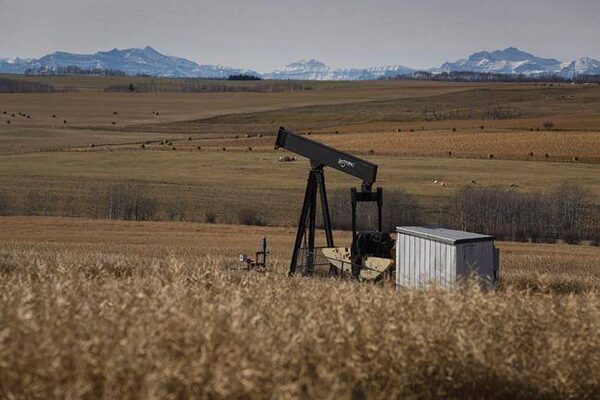
A decommissioned pumpjack is shown at a well head on an oil and gas installation near Cremona, Alta., on Oct. 29, 2016. Albrtans have called for Ottawa to fund the cleanup of the province's abandoned oil wells.The Canadian Press
Using taxpayer dollars to fix Alberta’s orphan-well mess is a bad idea.
The problem is, there may be no good ones.
Albertans, including Premier Jason Kenney, have called for a twin solution: Get Ottawa to fund the cleanup of spent oil and gas wells that remain after a slew of corporate bankruptcies, and put out-of-work oil-field hands on the job. The province, after five years of downturn in its energy sector, has plenty to deal with on both fronts.
But there is a serious flaw in this modern take on New Deal thinking. That is, the taxpayers who would foot the bill did not create the problem. Also, this would represent the second time they would be tapped to help solve it after the Alberta government chipped in $235-million in the form of a loan just a couple years ago.
Such a program, as well intentioned as it may be, goes against the polluter-pay principle. Oil and gas companies fund the Orphan Well Association (OWA), which is in charge of this type of cleanup, through a levy. The system was created nearly two decades ago as an industry solution to an industry problem, so here’s where it gets thorny.
Through a combination of bad markets, bad business plans, bad actors and a dash of bad enforcement of regulatory policy, the number of wells that require proper decommissioning, but have no solvent corporate owner, has ballooned. Meanwhile, industry’s ability to clean up the mess has been squelched.
By the start of November, the OWA had 3,406 wells to be decommissioned, up almost five-fold in five years, and 2,772 sites to be reclaimed to pre-drilling condition, an increase of six times. In that period, the association’s total expenditures on decommissioning wells and pipelines and reclaiming sites jumped to $94.4-million from $16.6-million.
Companies now in receivership, including Sequoia Resources, Trident Exploration and Houston Oil & Gas, have thousands more wells, and any not sold by their bankruptcy trustees will end up in the fund. This puts stress on landowners and municipalities that once received lease payments and taxes from the companies that had operated the wells, and heaps environmental risk onto the landscape.
Regulators are discussing solutions to prevent tens of thousands of other wells – those that still have owners but have long been idled – from ever getting onto the orphan inventory. They include imposing timelines for how long wells can be inactive and forcing operators to post security. But those ideas are risky, especially for operators with stressed balance sheets.
Of course, the most obvious symptom of the energy malaise is joblessness. The province shed 18,000 jobs across all sectors in November alone, according to Statistics Canada. One in five men under the age of 25 is unemployed. This demographic has been the main one for oil and gas field work. Many have the skill set to work on well abandonments and reclamation.
Still, convincing Canadians outside Alberta that cleaning up an industry’s mess is a good use for their money may not be easy, especially after Prime Minister Justin Trudeau’s Liberal government spent $4.5-billion to nationalize the contentious Trans Mountain Pipeline. In the Depression of the 1930s, U.S. president Franklin Roosevelt’s New Deal make-work initiative focused on projects for the broad public good, such as building roads and dams and sprucing up national parks. It was touted as a way to soften the economic blow on families across the country,
The energy industry and Mr. Kenney’s government have suggested another way to raise funds for cleanup: flow-through shares. This would involve, say, oil-field service companies selling shares to investors, with the proceeds aimed at orphan-site cleanup. The attraction for investors would be the creation of an environmental tax credit attached to the shares that they could claim. A similar program has been used by energy and mining companies to fund exploration.
The risk is in the marketability of the shares, and the public purse is still tapped, albeit not in the form of an old-school bailout.
Canadians outside the oil patch will no doubt balk at having to dig deep to help solve this, and rightfully so. The dilemma is that not doing so could have worse consequences.
 Jeffrey Jones
Jeffrey Jones